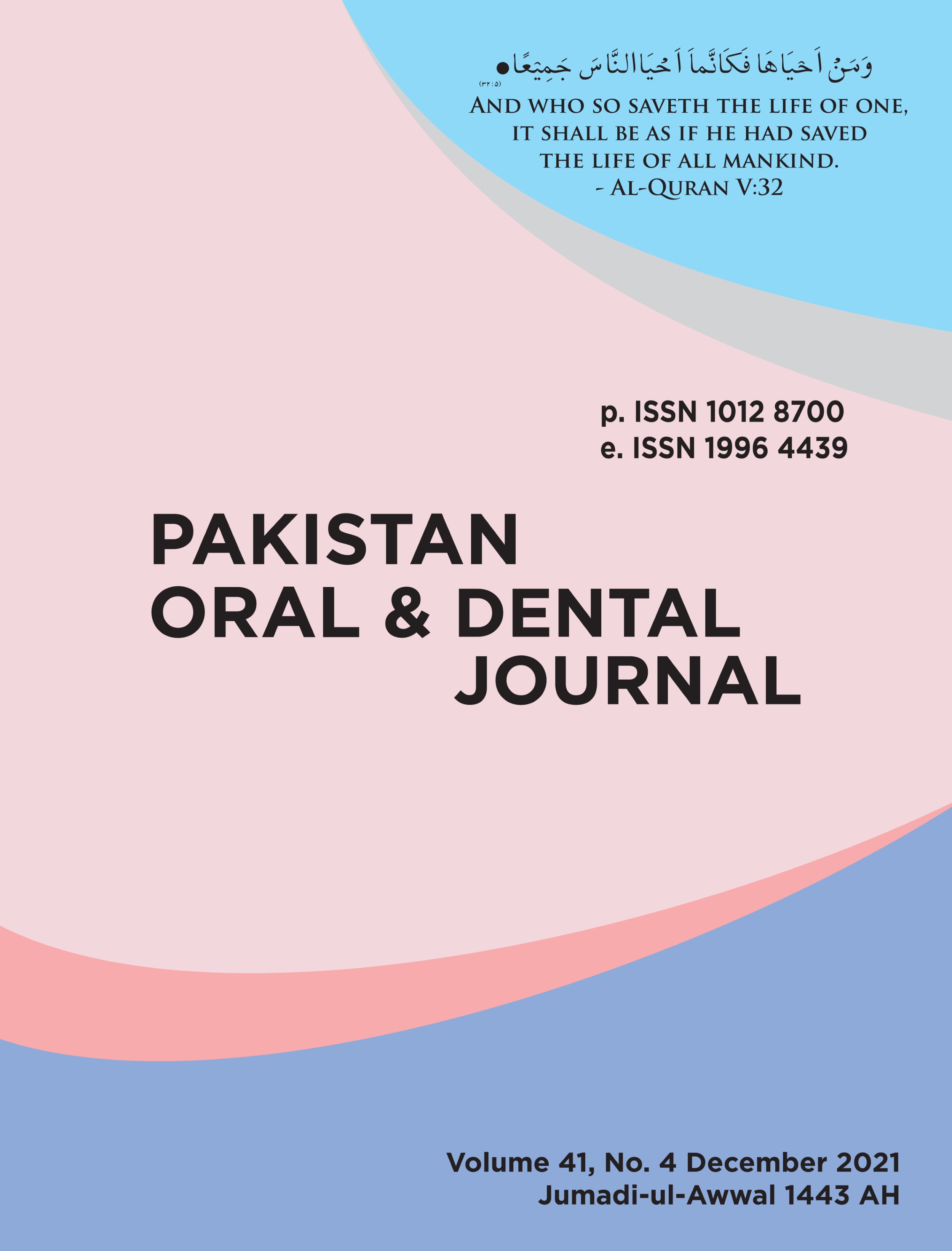SHORT-TERM PERIODONTAL AND GINGIVAL CHANGES OF TWO DIFFERENT ORTHODONTIC BRACKET DESIGNS: A CLINICAL PROSPECTIVE COHORT STUDY
Abstract
Orthodontic appliances usually impede proper oral hygiene; allow plaque accumulation and food stagnation around orthodontic brackets which will cause gingival inflammation and orthodontic treatment complications as short-term effects. If this remains the periodontal status may be also compromised. Metal brackets shape and design will affect cleansing and staining control throughout the duration of orthodontic treatment. In this study a comparison between synergy and conventional brackets will be carried out for both short and later the long term effects on periodontal status. Clinical prospective. At least one year. The objective of this prospective non-randomized controlled trial is to determine the short-term clinical effects of different bracket designs on periodontal and gingival health during fixed orthodontic treatment.
Sixty-eight consecutive healthy orthodontic patients aged between 14-18 years with Class I malocclusion, minimal crowding with no periodontal compromised dentition were recruited. All participants had their Plaque (PI) and gingival (GI) indices measured before commencing orthodontic brackets bond-up visit (T1). Participants were non-randomly divided into groups, group 1 (G1) treated using conventional pre-adjusted edgewise twin brackets (CB: Natural® Orthodontic products) while group 2 (G2) received straight wire low friction brackets (SB: Synergy®, Rocky Mountain Ortho. RMO). PI and GI were re-measured at 6 months during treatment (T2), the difference in PI and GI indices were compared using independent t-test.
There was a statistically significant increase in PI and GI during orthodontic treatment at T2; G2 had a higher PI and GI indices readings, the means difference (MD) for PI was -0.06966 while the MD for the GI was -0.12603, P:0.05). No adverse effects were reported during the trial.
Orthodontic brackets should be considered for width, height, tie wings and hooks configurations, as these features may affect plaque accumulation and gingival inflammation.

This work is licensed under a Creative Commons Attribution-NonCommercial 4.0 International License.


